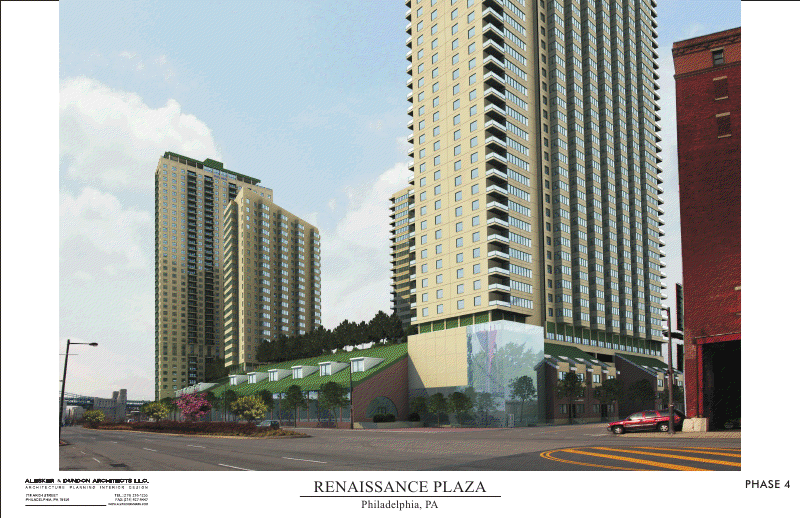CDAG: Develop “height bonus” guidelines for granting exceptions to waterfront’s 100-foot limit.

Key waterfront stakeholders held a meeting with First District Councilman Mark Squilla this week to revamp wording for the new Central Delaware Overlay.
Central Delaware Advocacy Group President Matt Ruben told CDAG members Thursday night that consensus was reached on some issues – including the need to design a bonus structure listing specific things developers could do to earn extra height for buildings within the overlay – while talks continue on other matters.
The new overlay would codify zoning principles from the Central Delaware Master Plan that are not already achieved through base zoning in the new zoning code.
The master plan calls for a 100-foot height limit on property within the Central Delaware, from Oregon to Allegheny avenues, and from the river to I-95. But it also says the Philadelphia City Planning Commission can grant exemptions.
Ruben said a bonus structure would give both developers and waterfront residents and advocates certainty about how much additional height could be granted, and what the developer would have to provide in exchange, such as a certain amount of public green space. CDAG members also noted this would make it easier for the PCPC to make decisions about additional height.
There is an interim waterfront overlay in place. It does not have a 100-foot height cap – although that limit within the adopted master plan requires the PCPC to consider it when approving projects.
Ruben and CDAG member Joe Schiavo, who also went to the Wednesday meeting, said attendees included representatives of the Development Workshop, the Delaware River Waterfront Corporation, and city planning.
The PCPC has approved the plan of development for Ensemble Real Estate’s roughly 130-foot Marina View Towers near the Ben Franklin Bridge. CDAG criticized those actions, saying that the developer was not required to provide a public benefit in exchange. But at last month’s meeting, commissioners denied approval to Ensemble for a 180-foot tower on the site of Piers 34 and 35 South, saying they would not grant approval without some definite public benefit – even though they like the project.
Ruben said the group that met Wednesday also reached agreement on two issues related to river access streets – a network the master plan designates as key linkages between the city and the waterfront. An earlier iteration of the new overlay said nothing could be built that would block the eventual expansion of the streets down to the water. Critics said that in some cases, the streets meet Delaware Avenue/Columbus Boulevard at an angle, and continuing them would cut up some parcels so that they were very difficult to use. A newer proposal said only that room needed to be left for an access path. Ruben said there was agreement Wednesday that development did not need to accommodate an actual continuation of the roadway, and that the angle did not have to be the same, but that the swath of land left open must be equal to the size of the existing roadway and sidewalks.
Attendees also agreed to eliminate one street from the list of access streets: Mifflin Street in Pennsport. But no consensus was reached on a proposal to also eliminate Berks Street in Fishtown. Ruben said several alternatives to Berks Street are under discussion, including Palmer, Montgomery and Dyott.
Another issue that still needs resolution: Liability. The plan is that either through the overlay or an also in-the-works stream buffer provision of the zoning code (which was introduced in city council this week), developers would be required to leave a waterfront setback. It is within this setback that the Central Delaware Trail would be built.
For a very long time, Craig Schelter of the Development Workshop has said allowing public access through private property creates liability issues. CDAG agrees. Schiavo said the city needs to work on this issue.
The plan is that city planners will produce an updated draft of the overlay, and it will be circulated to the stakeholders for further discussion, Schiavo said. Because the bulk of the waterfront is within Squilla’s district, he is expected to introduce the legislation.
Earlier in Thursday’s CDAG meeting, the group heard from representatives of Waterfront Renaissance Associates, which is proposing the tallest project so far: A four-tower mixed use development, with two towers reaching 426 feet, at 400 N. Columbus Blvd. WRA presented the project in an information-only session to the PCPC last month. Both the PCPC and CDAG brought up height issues, but the developer says the height – and 1,458 apartments that would fit within – are necessary to support significant ground-floor retail development, which the master plan calls for. Project Attorney Hercules Grigos said the team is taking the plan, which has not changed since the planning commission meeting, around to various community groups for feedback. He and architect Bill Alesker said they would be back to talk again to CDAG.
Reach the reporter at kgates@planphilly.com.
WHYY is your source for fact-based, in-depth journalism and information. As a nonprofit organization, we rely on financial support from readers like you. Please give today.



